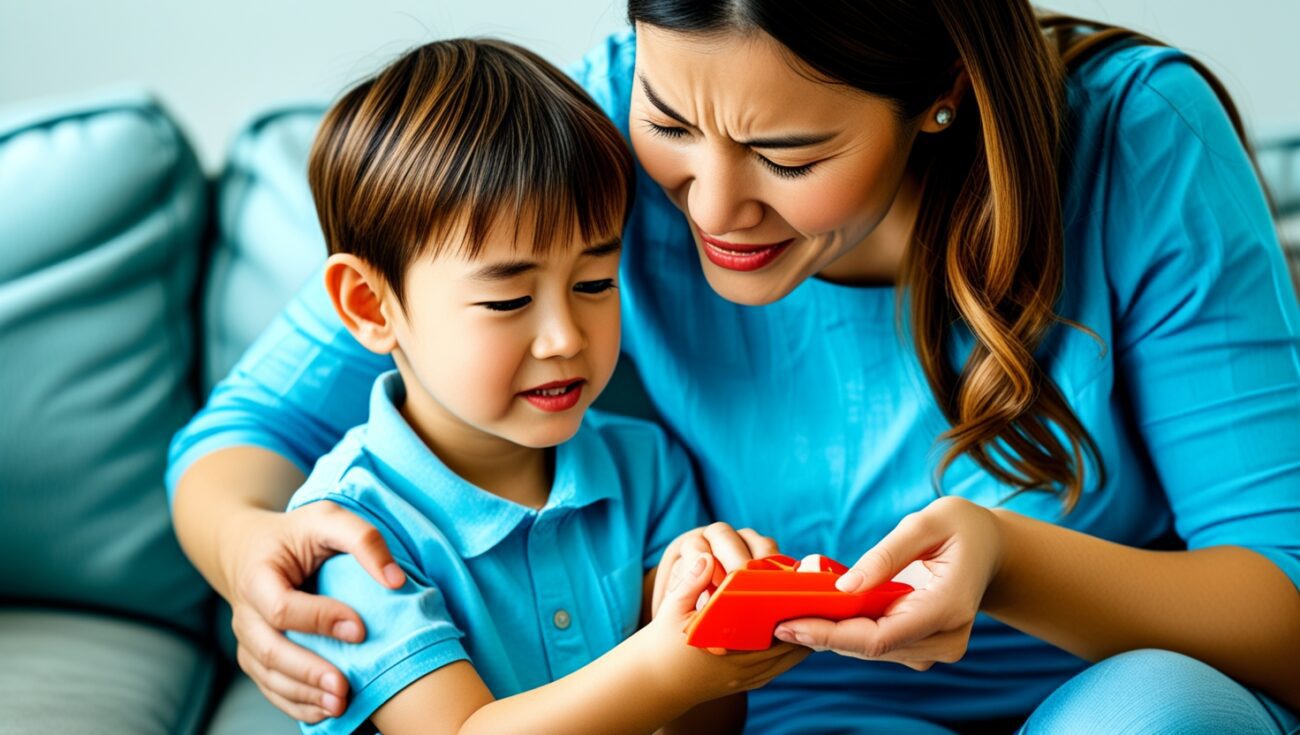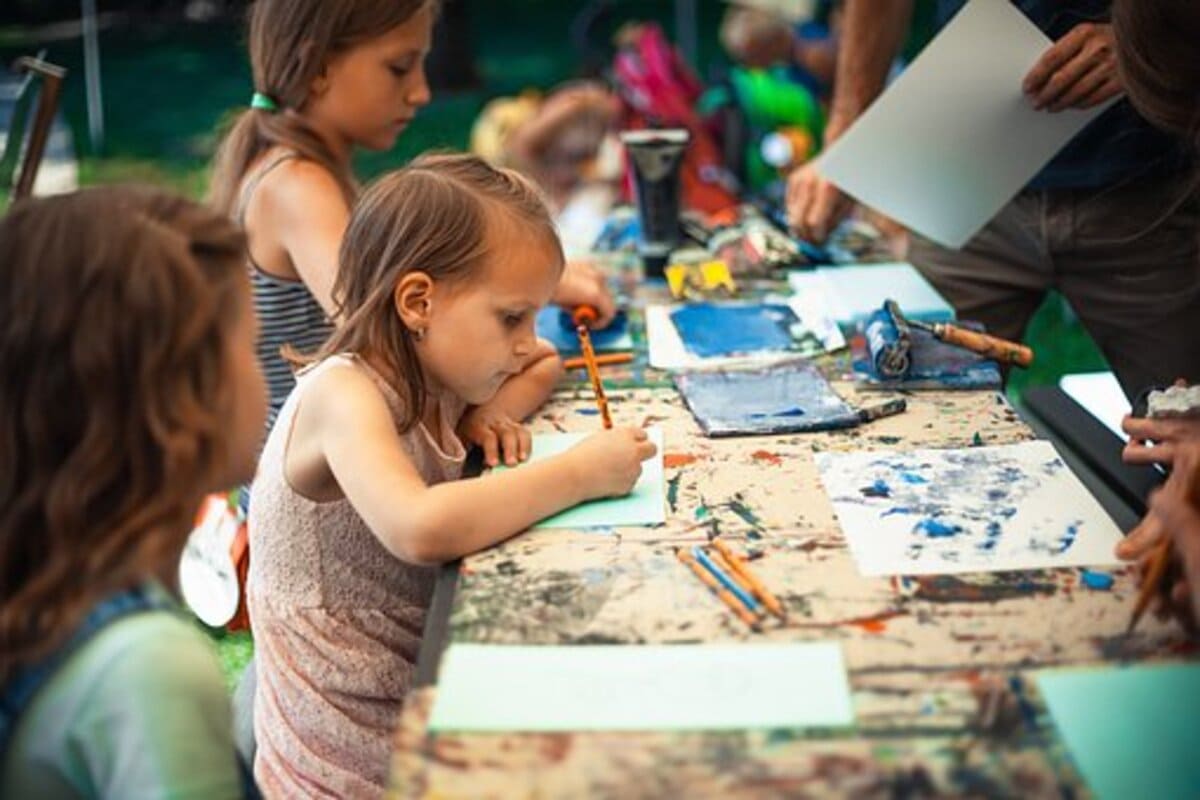Blog
How to Handle Kids Who Struggle with Self-Expression

Do you find that your child struggles to express their thoughts, feelings, or needs? Whether it’s through speech, body language, or even writing, some children find it difficult to communicate effectively. This can lead to frustration, misunderstandings, and behavioral challenges. As a parent, it’s important to recognize that self-expression is a skill that can be developed over time, and with the right guidance, your child can learn to express themselves in healthy and constructive ways. In today’s article, we’ll explore five helpful strategies for parents to support children who struggle with self-expression, allowing them to build confidence in communicating their feelings and needs.
Watch the full video here for more insights on how to help your child express themselves:
1. Create a Safe and Supportive Environment
One of the most important factors in helping children express themselves is creating a safe environment where they feel comfortable sharing their thoughts and feelings. Without emotional safety, children may struggle to open up.
- Be Emotionally Available: Children are more likely to express themselves when they feel they can trust their parents. Show your child that you are always there to listen by being present and giving them your full attention. Avoid distractions like phones or TV when they want to talk.
- Foster a Non-Judgmental Atmosphere: Ensure that your child feels safe expressing all their emotions, even the ones that might be hard to hear. Avoid dismissing their feelings, and instead, validate them. For example, “I understand you’re feeling sad, and it’s okay to feel that way.” This helps them feel safe to express a range of emotions.
- Encourage Open Communication: Let your child know that there’s no wrong way to express themselves. Encourage them to share their thoughts, even if it’s difficult. If they are reluctant, start with simple, non-threatening questions like, “What made you happy today?” or “How was school?”
2. Encourage Creative Forms of Expression
Some children may find it easier to express themselves through creative outlets rather than through words alone. Activities like drawing, music, dance, or even playing pretend can help children communicate their feelings in a more comfortable way.
- Use Art to Express Emotions: Art can be a powerful tool for children who struggle to express themselves verbally. Encourage your child to draw or paint what they are feeling, even if they can’t fully explain it. Ask them, “What does this picture mean to you?” to start a conversation about their emotions.
- Music and Movement: Music and movement offer another way for children to release and express their emotions. Play different types of music and encourage your child to dance or sing along. Afterward, ask them what the music made them feel and talk about it.
- Pretend Play and Storytelling: Pretend play is an excellent way for children to explore different roles and scenarios. You can encourage this through toys, puppets, or acting out situations together. Through pretend play, children often express things they might not yet have the words for.
3. Teach Emotional Vocabulary
One of the key reasons children struggle with self-expression is that they lack the words to describe what they’re feeling. By expanding their emotional vocabulary, you help them build the tools they need to communicate their emotions more clearly.
- Introduce New Emotional Words: Start by introducing simple words for basic emotions such as happy, sad, angry, or excited. As your child becomes more comfortable, introduce more complex feelings such as frustrated, embarrassed, anxious, or proud.
- Label Emotions Together: When your child is upset, help them identify the emotion they are experiencing. For example, “It looks like you’re feeling frustrated because you can’t find your toy. Is that how you feel?” This helps your child connect their feelings to specific words and makes them feel understood.
- Use Books or Media: Many children’s books and shows include characters that experience different emotions. Use these as a tool to discuss emotions. Ask your child, “How do you think this character feels?” This encourages your child to think about emotions beyond their own experience.
4. Be Patient and Give Them Time
Children who struggle with self-expression often need more time to process their thoughts and feelings before they can communicate them effectively. It’s important to be patient and give them the space they need to express themselves in their own time.
- Don’t Rush Their Response: If your child is struggling to express themselves, avoid rushing them or finishing their sentences for them. Give them time to think and respond at their own pace. For example, “Take your time and let me know when you’re ready to talk about it.”
- Avoid Interrupting or Pressuring: If your child hesitates or struggles to find the right words, avoid interrupting or putting pressure on them. Encourage them with phrases like, “I’m here whenever you’re ready to talk,” which allows them to feel in control of the situation.
- Allow for Silence: Sometimes, children need time to reflect and gather their thoughts before speaking. Give them quiet moments when necessary. For instance, “I can see you’re thinking about something. We can talk whenever you’re ready.” This reduces stress and allows your child to gather their thoughts.
5. Model Healthy Self-Expression
Children learn by watching the adults around them. By modeling healthy self-expression, you teach your child how to communicate their feelings effectively and appropriately.
- Use ‘I’ Statements: Show your child how to express your own emotions clearly and respectfully. Use ‘I’ statements to communicate how you feel, such as “I feel frustrated when the house is messy because it’s hard to focus.” This teaches your child that it’s okay to express emotions and that doing so in a calm, clear way is important.
- Share Your Experiences: When appropriate, share your own feelings with your child. For example, “I felt sad today because I missed my friend, but talking about it helped me feel better.” This shows your child that emotions are a natural part of life and can be managed through healthy communication.
- Express Emotions Positively: Whenever possible, demonstrate positive emotional expression by calmly discussing how you handle difficult emotions, like stress or frustration. For example, “I felt upset when I lost my keys, but I took a deep breath and found them. I was so relieved!”
Helping a child who struggles with self-expression can take time, but with patience, understanding, and the right strategies, you can create an environment that encourages them to open up and communicate. By fostering emotional safety, encouraging creative outlets, teaching emotional vocabulary, being patient, and modeling healthy self-expression, you are helping your child develop the skills they need to express themselves effectively. With your support, your child can grow more confident in communicating their thoughts, feelings, and needs.
Watch the full video for more helpful tips and strategies:




















